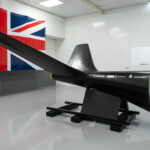
One of the lessons learned for the Defense Department from the ongoing war in Ukraine is the speed at which commercial technologies can quickly be delivered to the Ukrainians in their fight against Russia than established DoD programs, a senior department official said on Wednesday. The fact that the Defense Innovation Unit (DIU) had already helped prototype some of these commercial technologies also aided their rapid transfer to Ukraine, Doug Beck, DIU director and a senior advisor to Defense Secretary…

 By
By 











